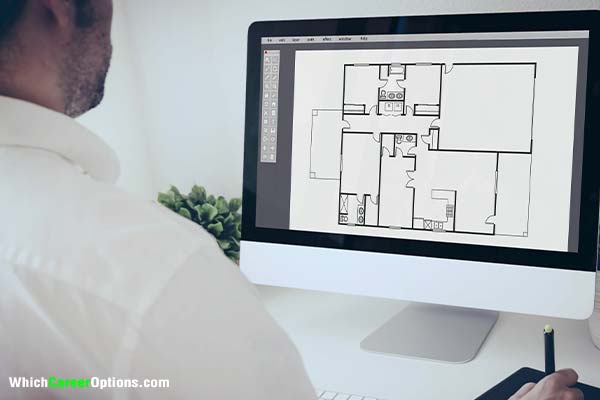Civil Draughtsman Job Description: A Complete Career Guide
Discover the key responsibilities of a civil draughtsman, essential technical skills, salary expectations, and career growth opportunities in engineering design.

Behind every impressive building, bridge, or infrastructure project lies the precise technical drawings created by a civil draughtsman. If your career quiz results suggest you have strong technical aptitude, attention to detail, and enjoy transforming engineering concepts into visual plans, this could be your ideal career path in the construction and engineering sector.
This comprehensive guide will help you understand the civil draughtsman job description, required qualifications, career progression, and how to determine if this technical design role matches your skills and interests.
What is a Civil Draughtsman?
A civil draughtsman (also spelled draftsman) is a technical professional who creates detailed drawings and plans for civil engineering projects. They work closely with engineers and architects to convert design concepts into precise technical documents used for construction.
Key aspects of the civil draughtsman role:
- Creates 2D and 3D technical drawings
- Works on infrastructure projects (roads, bridges, buildings)
- Uses CAD software and manual drafting techniques
- Ensures designs meet specifications and regulations
- Bridges communication between engineers and construction teams
Key Responsibilities of a Civil Draughtsman
1. Technical Drawing Creation
- Produce detailed construction drawings using CAD software
- Develop site plans, elevations, and cross-sections
- Create reinforcement details and structural components
- Prepare as-built drawings of completed projects
- Generate bill of quantities and material specifications
2. Design Support
- Assist engineers in developing design concepts
- Convert rough sketches into formal technical drawings
- Make modifications to existing designs as required
- Ensure all drawings follow company standards
- Maintain organized drawing files and documentation
3. Quality Control
- Verify dimensions and specifications
- Check drawings for accuracy and completeness
- Ensure compliance with relevant codes and standards
- Coordinate with engineers to resolve design issues
- Update drawings to reflect approved changes
4. Project Coordination
- Liaise between engineers, architects, and contractors
- Participate in project meetings as required
- Prepare drawing sets for submissions and approvals
- Manage drawing revisions and version control
- Maintain drawing registers and documentation
How to Know If a Civil Draughtsman Role Is Right for You
Your career quiz may suggest this role if you:
✅ Have strong technical and spatial visualization skills
✅ Enjoy working with precise measurements and details
✅ Are proficient with computers and design software
✅ Can interpret engineering concepts and specifications
✅ Work well both independently and in teams
✅ Have patience for repetitive, detail-oriented tasks
If you’re looking for a technical career that combines creativity with precision, civil draughting offers excellent opportunities.
Skills & Qualifications Needed for Civil Draughtsman
Education & Certifications
- Diploma in Civil Engineering/Civil Draughting (typically required)
- Certification in AutoCAD, Revit, or other CAD software
- Vocational training in technical drawing (alternate pathway)
- Bachelor’s in Civil Engineering (beneficial for advancement)
Essential Technical Skills
✔ Proficiency in AutoCAD, Civil 3D, and other CAD software
✔ Strong understanding of engineering drawings and symbols
✔ Knowledge of construction methods and materials
✔ Ability to interpret architectural and engineering plans
✔ Familiarity with relevant codes and standards
Important Soft Skills
✔ Attention to detail and accuracy
✔ Time management and organization
✔ Communication and teamwork
✔ Problem-solving abilities
✔ Adaptability to new technologies
Typical Career Path for Civil Draughtsmen
| Career Stage | Position | Key Responsibilities |
|---|---|---|
| Entry-Level | Junior Draughtsman | Basic drawing tasks under supervision |
| Early Career | Civil Draughtsman | Full range of drafting responsibilities |
| Mid-Career | Senior Draughtsman | Complex projects and quality control |
| Advanced | CAD Manager/Design Technician | Oversees drafting department |
| Specialized | BIM Coordinator | Manages Building Information Modeling |
Salary Range & Job Outlook
- Average Salary (India): ₹2-6 lakhs per annum
- Average Salary (U.S.): $45,000-$70,000 annually (U.S. Bureau of Labor Statistics)
- Job Growth: 4-6% projected growth (varies by region)
- High-Demand Sectors: Construction, Infrastructure, Urban Development
Key Terms & Definitions
- CAD: Computer-Aided Design – software for creating technical drawings
- BIM: Building Information Modeling – 3D model-based process
- Blueprints: Technical drawings used in construction
- As-Built Drawings: Final drawings reflecting completed construction
- Topographic Survey: Map showing natural and man-made features
Tips for Starting a Civil Draughting Career
🔹 Master industry-standard CAD software – AutoCAD is essential
🔹 Develop 3D modeling skills – BIM is becoming industry standard
🔹 Build a strong portfolio – Showcase your best technical drawings
🔹 Gain site experience – Understanding construction helps create better drawings
🔹 Stay updated on codes – Building regulations frequently change
FAQs About Civil Draughtsman Careers
1. What’s the difference between architect and civil draughtsman?
Architects focus on building design and aesthetics, while civil draughtsmen specialize in technical drawings for structural and infrastructure projects.
2. Is civil draughting a good career choice?
Yes, it offers stable employment in construction and engineering sectors with opportunities for specialization and advancement.
3. Can I become a draughtsman without an engineering degree?
Yes, many draughtsmen start with diplomas or vocational training in drafting technology.
4. What software skills are most important?
AutoCAD is fundamental, while Civil 3D, Revit, and MicroStation are valuable additions.
Career Limitations to Consider
⚠ Can be sedentary work with long hours at a computer
⚠ Need to meet tight deadlines during project crunch times
⚠ Must continuously update software skills as technology evolves
⚠ May require overtime to meet project deadlines
Final Thoughts
A career as a civil draughtsman offers the perfect blend of technical challenge and creative satisfaction for those with strong visualization skills and attention to detail. If your career quiz highlights your technical aptitude and precision-oriented mindset, this could be your ideal path in the engineering and construction industry.
With infrastructure development growing globally, skilled civil draughtsmen will remain in steady demand. Ready to start drafting your career future? Explore technical drawing courses in your area today!
